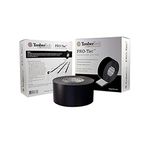A Look Through Patio Doors
Sliding or hinged, big panes or multilite, these glass doors should be built to withstand the elements as well as years of abuse.

Synopsis: This detailed article looks at the features distinguishing different types of patio doors. The author covers a variety of materials, including vinyl and aluminum cladding, extruded vinyl, fiberglass composite, and solid-wood veneer. The article also covers other features, from sill designs and locks to adjustable hinges and glass options, that should be weighed before buying a door.
It’s always a trade-off, isn’t it? You want light in the house, so you cut a hole in the wall: Now the floor gets wet when it rains, so you cover the hole with glass. A little cross ventilation might be nice, so you figure out a way to open and close the glass. Now the glass leaks again. Just wait until you try to make the window into a big door.
Forty years ago, when oil was cheap and we didn’t know better, patio doors were novelties, just big sliding windows that often leaked or came apart after a few years. There are better products available these days, and patio doors are a hot item (Andersen Windows alone made nearly 150,000 sliders last year). But with every window shop getting into the act, it’s hard to tell the diamonds from the zircons. To find out what’s going on, I talked with carpenters, architects, manufacturers and designers about these big walk-out windows.
More than 100 companies make patio doors, and they all offer a wide variety of materials, styles and options. The number of permutations is exponential, but here are the basics.
The door buyer’s menu is divided into two basic choices: either hinged doors or sliding doors. Hinged doors include French doors (a matched pair of hinged, operating panels that traditionally have divided lites) and patio doors (one hinged door that has been paired with a fixed panel). Hinged doors offer a traditional design; French doors open a larger area and are available as in-swing or out-swing designs. Hinged doors are also more expensive, more difficult to install and often require adjustment.
Sliding doors usually consist of one fixed panel and one operating panel that rolls on a track. Sliders don’t take up any room when they open, are less expensive and are easy to screen. Unfortunately, they don’t seal as well as hinged doors.
Hardware keeps the doors straight and tight
If you’re thinking about security, worrying about the lock on a door that’s mostly glass might be a little silly, but locks also help to keep the door tight against air infiltration. For sealing purposes, hinged patio and French doors need to be secured to the jamb in more than one spot. Multipoint locks engage in at least three places, and they not only fortify the door but also minimize warping stiles by pinning the door to the jamb. Some multipoint locks consist of shoot bolts that go up into the head jamb and down into the sill; other varieties operate horizontally above and below the lockset; and some locks offer a combination of both. Marvin and Kolbe & Kolbe offer a feature that prevents the lock from engaging until the door is shut; it’s all too common to engage the door handle and to try to shut the door with the lock pins protruding, which then puts big dings in the door trim.
For more photos and details, click the View PDF button below:
Fine Homebuilding Recommended Products
Fine Homebuilding receives a commission for items purchased through links on this site, including Amazon Associates and other affiliate advertising programs.

The New Carbon Architecture: Building to Cool the Climate

Flashing and Joist Tape

Angel Guard Deck Demon






















